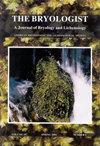干燥速率、抑制蛋白质合成及紫黄素循环对白松草复湿恢复的影响
IF 1.5
4区 生物学
Q4 PLANT SCIENCES
引用次数: 1
摘要
摘要利用核和叶绿体编码的蛋白质合成抑制剂和紫黄素周期抑制剂(DTT:二硫代硫糖醇),通过细胞学、光合作用(e-转运速率、光保护机制)和其他代谢参数,监测白桦Porella platyphylla(一种耐干燥的叶苔植物)在1周内的5种不同脱水速率下的生理恢复情况(1小时、24小时、48小时)。干燥耐受性是白桦的主要组成部分,使其能够在快速干燥中存活,并采用主动的再水化诱导修复和恢复机制。在实验室空气(~ 35%相对湿度/RH/)中脱水一周后,再水化24小时,叶绿体呈不规则圆形。类囊体功能相关的光合作用过程在1 h内的恢复速度非常快,且不依赖于蛋白质合成,而整体恢复(除了76% RH时植物干涸,仅在有限程度上依赖于蛋白质合成)需要在再湿过程中重新合成蛋白质。补液过程中蛋白质的合成影响rehydrin的表达、渗透石和一般碳水化合物的代谢、主要的修复和抗氧化机制。在76% RH干燥的样品中,回收率最好。脱水1周后,膜通透性增加。24小时后膜功能恢复正常。48 h),除了遭受严重脱水的植物。在不同条件下干燥的植物和在恢复期间采集的样品的总蛋白质含量普遍低于充分膨胀的对照植物。在光照恢复过程中,叶黄素循环起着重要作用;我们证实存在较大的玉米黄质依赖性和较小的玉米黄质不敏感性NPQ(非光化学猝灭)。干燥条件越好,光照保护效果越好。渗透电位最高的是处于剧烈脱水状态的植物。总可溶性碳水化合物含量平衡良好,在不同处理后似乎没有变化。在干燥1周的不同程度上,脯氨酸含量显著增加,而总果聚糖含量则有所降低。复水化过程中果聚糖含量的变化可能与细胞质蛋白质合成有关。本文章由计算机程序翻译,如有差异,请以英文原文为准。
Effects of desiccation rate and inhibition of protein synthesis and the violaxanthin cycle on the rewetting recovery of Porella platyphylla
Abstract. Following 5 different rates of 1-week desiccation to which Porella platyphylla (a desiccation-tolerant leafy liverwort) was subjected, physiological recovery upon rehydration (after 1 h, 24 h, 48 h) in light was monitored by cytological, photosynthetic (e-transport rate, photoprotective mechanisms), and other metabolic parameters using nuclear- and chloroplast-encoded protein synthesis inhibitors and a violaxanthin cycle inhibitor (DTT: dithiothreitol). Desiccation tolerance is mainly constitutive in P. platyphylla, allowing survival of rapid drying, and employs an active rehydration-induced repair and recovery mechanism. Following 24 hours of rehydration after the one-week dehydration in laboratory air (∼35% relative humidity /RH/), the chloroplasts had an irregular round shape. The recovery within 1 h of the thylakoid-function-related photosynthetic processes was extremely fast and independent of protein synthesis, while the overall recovery (except plants dried up at 76% RH, which depended on protein synthesis only to a limited extent) required de novo protein synthesis during rewetting. During the course of rehydration protein synthesis affects rehydrin expression, osmolite and general carbohydrate metabolism, the main repair and antioxidant mechanisms. Recovery was the best in samples dried up at 76% RH. Membrane permeability increased upon rehydration following 1-week dehydration. Normal membrane function recovered after 24 h (max. 48 h), except in plants that suffered drastic dehydration. Total protein content of plants dried under different conditions and of samples taken during recovery was generally lower than in the control plants at full turgor. The xanthophyll cycle has a great importance during the recovery in light; we confirmed the existence of a greater zeaxanthin-dependent and a smaller zeaxanthin-insensitive NPQ (nonphotochemical quenching). Plants dried under more favorable conditions had better light protection. The highest values of the osmotic potential belonged to the plants subjected to intense dehydration. Total soluble carbohydrate content was well-balanced and seemed to be unchanged following the different treatments. There was a significant increase in proline, while total fructan showed lower values at different degrees of 1-week desiccation. The cytoplasmic protein synthesis is likely to be involved in the change of the fructan content during rehydration.
求助全文
通过发布文献求助,成功后即可免费获取论文全文。
去求助
来源期刊

Bryologist
生物-植物科学
CiteScore
2.40
自引率
11.10%
发文量
40
审稿时长
>12 weeks
期刊介绍:
The Bryologist is an international journal devoted to all aspects of bryology and lichenology, and we welcome reviews, research papers and short communications from all members of American Bryological and Lichenological Society (ABLS). We also publish lists of current literature, book reviews and news items about members and event. All back issues of the journal are maintained electronically. The first issue of The Bryologist was published in 1898, with the formation of the Society.
Author instructions are available from the journal website and the manuscript submission site, each of which is listed at the ABLS.org website.
All submissions to the journal are subject to at least two peer reviews, and both the reviews and the identities of reviewers are treated confidentially. Reviewers are asked to acknowledge possible conflicts of interest and to provide strictly objective assessments of the suitability and scholarly merit of the submissions under review.
 求助内容:
求助内容: 应助结果提醒方式:
应助结果提醒方式:


